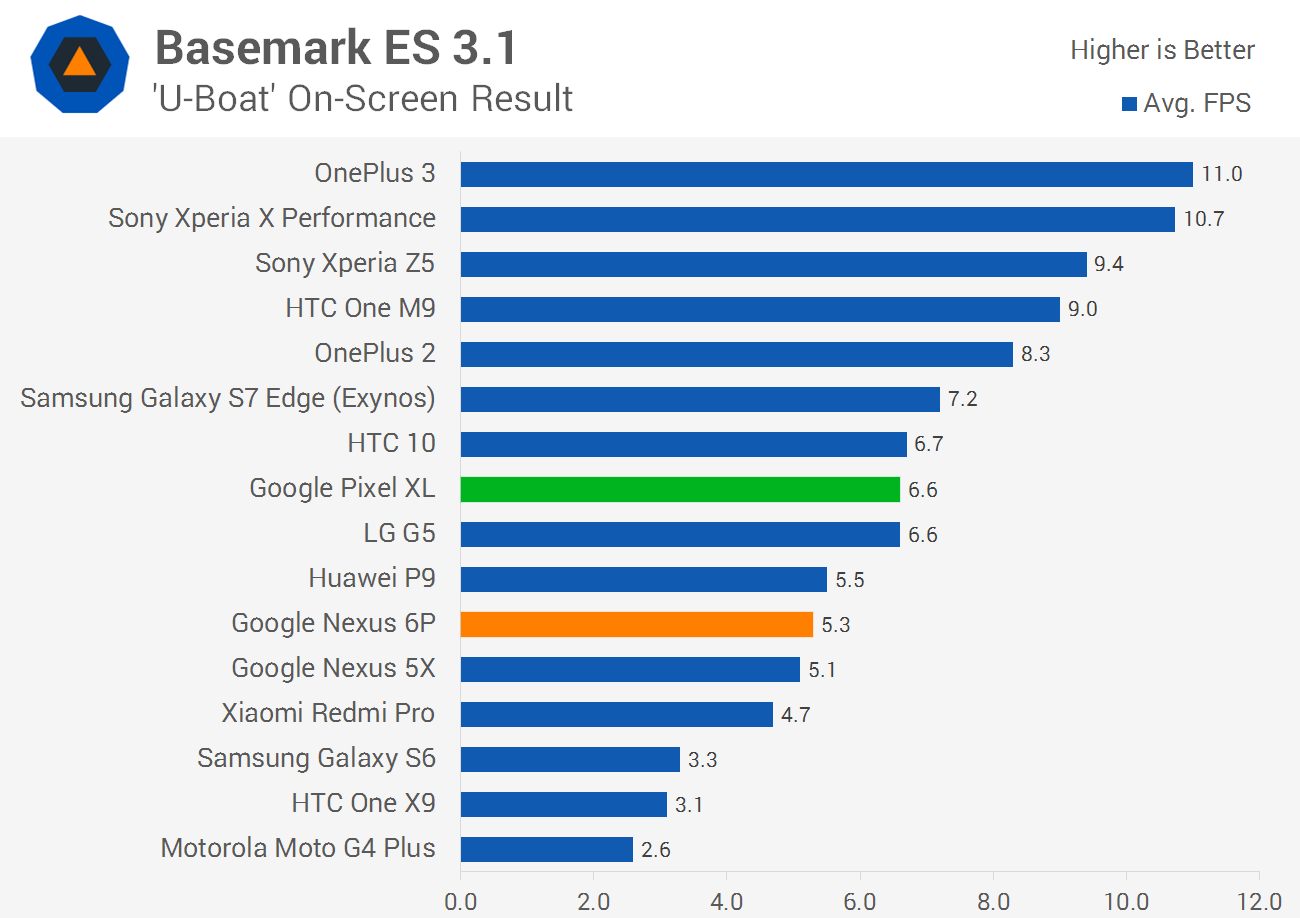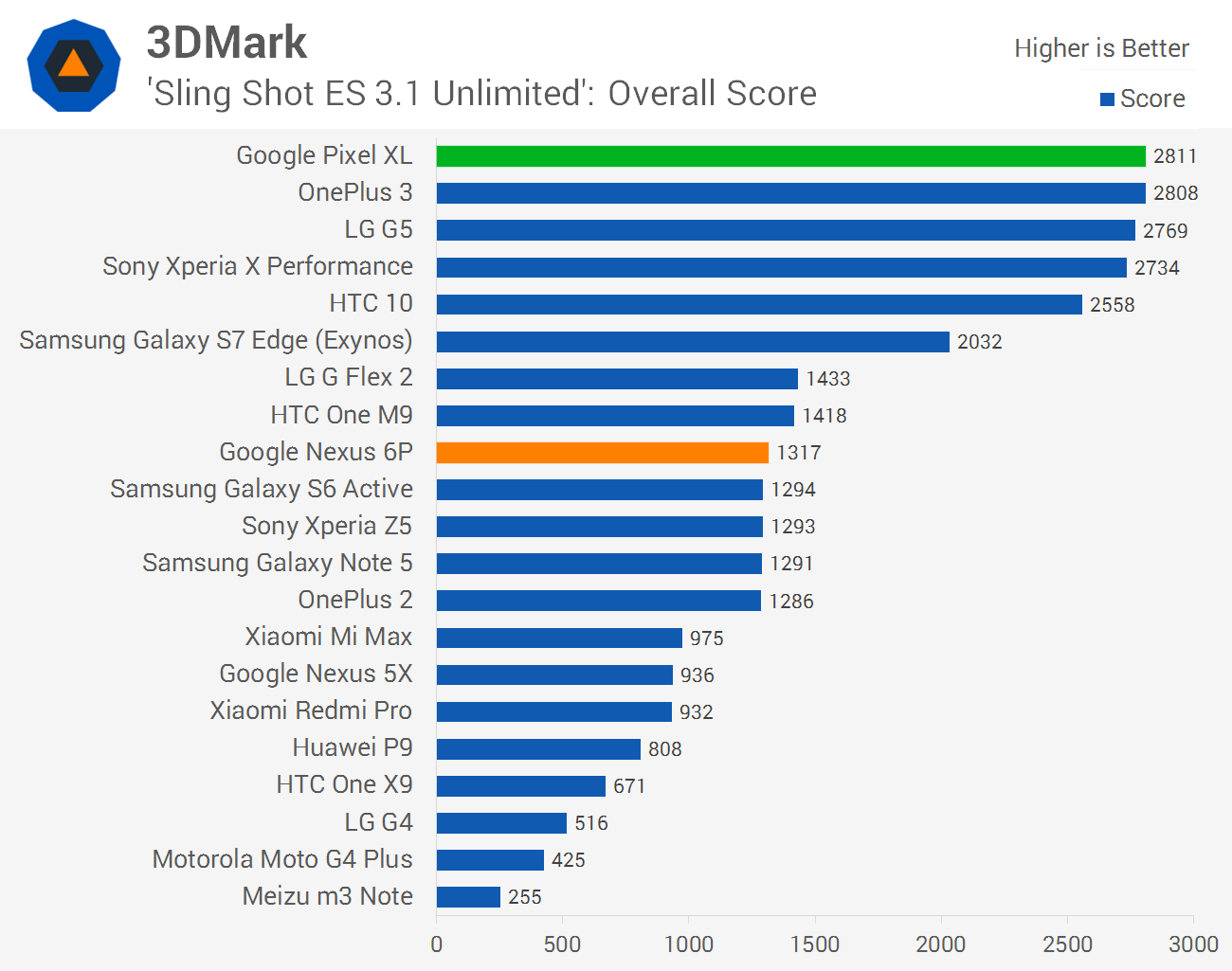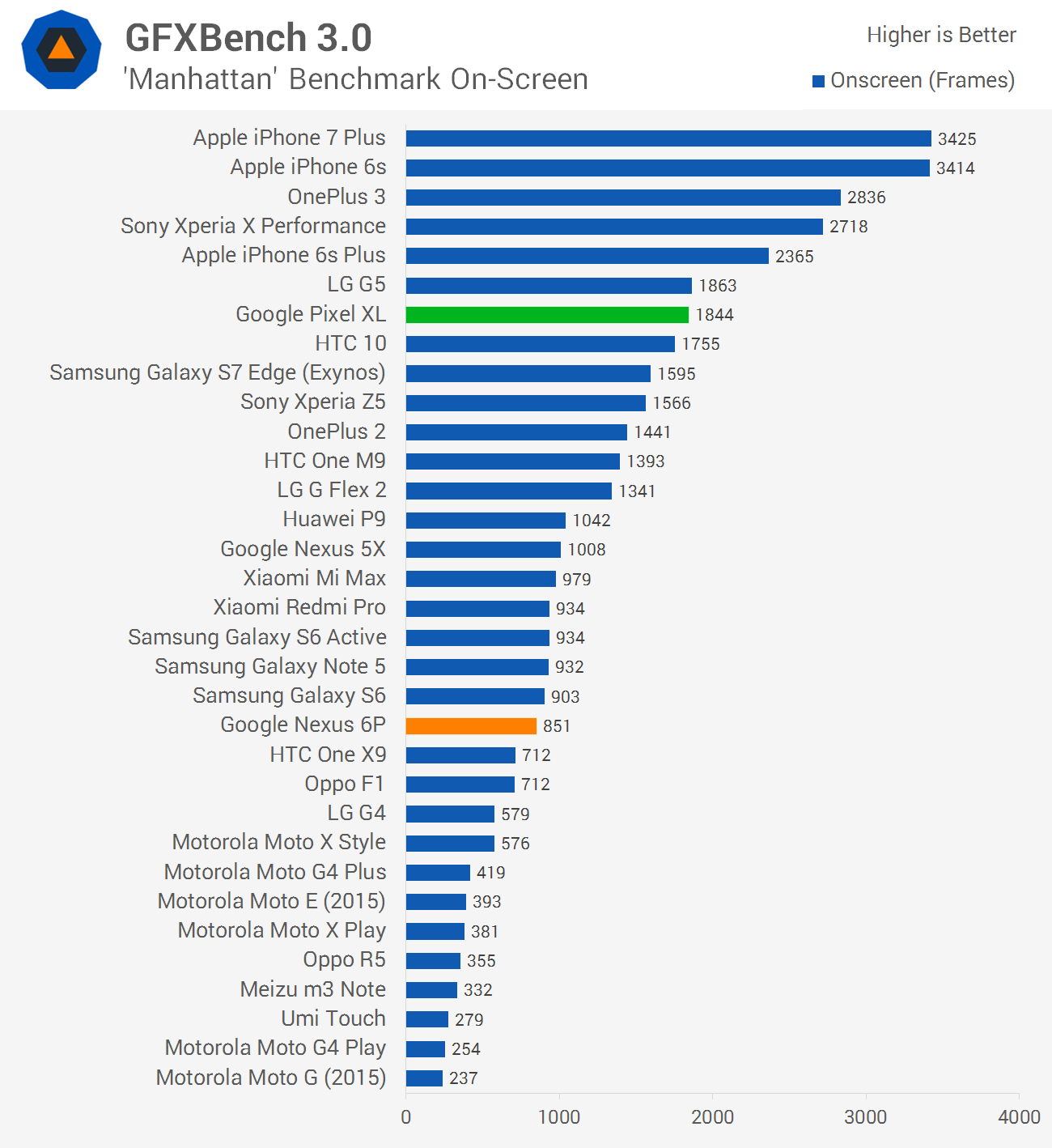Graphics, Throttling, and Storage Performance






In GPU-limited workloads such as 3D gaming, the Pixel XL performs essentially the same as other Snapdragon 820 devices with 1440p displays. As the Adreno 530 GPU is clocked the same here as with other devices, I wasn't expecting any meaningful differences, and the benchmark results show this.
Again, the Pixel XL holds a significant performance advantage here over the Nexus 6P, to the tune of around 87%.


The Pixel XL throttles its SoC in a similar way to other Snapdragon 820 devices. The handset provides peak performance for around five minutes, before reducing its clock speeds to provide around a 15 percent drop in GPU performance. However, sustained performance is still well above what the Nexus 6P provided.
Unfortunately, I cannot discuss much about the NAND performance of the Pixel XL. Initial results indicated ludicrous random and sequential read speeds to Android's /data partition, which is used by several benchmarks for storage performance evaluation. After speaking with Google's Pixel team, it's clear that this is due to a bug with the benchmarks rather than additional high-performance hardware in the device.
From what I can gather from other tests, the NAND performance in the Pixel XL is still limited by disk encryption, and falls in line with what we saw in the Nexus 6P. With that said, app loading times and general performance is similar to the OnePlus 3, which has some of the fastest storage I've tested in a handset.
